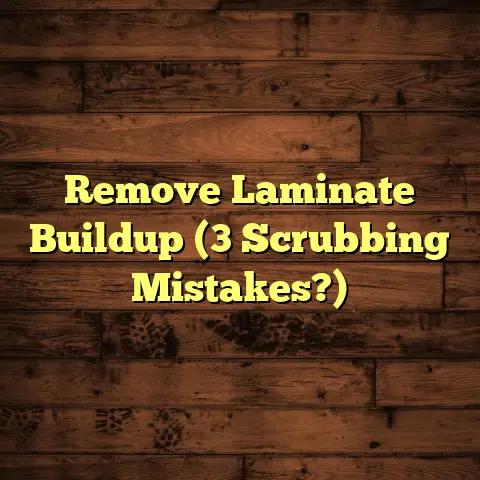How to Level Floor Joists? (2 Repairs Inside)
Ever walked across your floor and felt like you were on a subtle, unwanted rollercoaster? Or maybe you’ve tried placing a table only to find it perpetually wobbling, no matter how many napkins you shove under its legs? I get it. As a flooring contractor, I’ve seen firsthand the frustration and even embarrassment uneven floors can cause.
It’s more than just a minor annoyance; it can make you feel like your home is slowly falling apart, and that’s a feeling nobody wants. The good news? It’s often fixable. With the right knowledge and a bit of elbow grease, you can tackle those uneven floor joists and restore stability and peace of mind to your home.
Section 1: Understanding the Basics of Floor Joists
What Are Floor Joists?
Think of floor joists as the unsung heroes of your home’s structure. They’re the horizontal beams, usually made of wood, that run parallel to each other beneath your floor. Their primary job is to support the weight of everything above them – your furniture, your family, and even you!
They act as a bridge, distributing the load to the foundation walls. When floor joists are level and properly spaced, they create a solid, stable surface. But when they’re not, that’s when you start experiencing those frustrating uneven floors. Imagine a perfectly tuned guitar string versus one that’s loose and floppy. The joists are your home’s strings, and we want them nice and taut!
For example, a typical floor joist might be a 2×10 spaced 16 inches on center (meaning the distance from the center of one joist to the center of the next is 16 inches). This spacing and size are crucial for proper weight distribution.
Common Causes of Uneven Floor Joists
So, what makes these structural superheroes go rogue and cause unevenness? I’ve seen a few common culprits over my years in the business:
-
Settling Foundations: This is a big one. Over time, the ground beneath your foundation can shift and settle, causing the foundation to move unevenly. This, in turn, puts stress on the floor joists, leading to sagging and unevenness. Think of it like a seesaw where one side slowly sinks into the ground.
-
Moisture Issues: Water is the enemy of wood. Leaks, high humidity, or poor ventilation in crawl spaces can cause wood rot and decay in the joists. This weakens them, leading to sagging. I once worked on a house where a leaky pipe had gone unnoticed for years, and the joists were literally crumbling to the touch.
-
Poor Construction Practices: Sometimes, the problem starts right from the beginning. Improperly sized joists, inadequate spacing, or using low-quality lumber can all contribute to uneven floors down the line. I’ve seen instances where builders cut corners, and the long-term consequences were significant.
-
Overloading: While less common, consistently placing extremely heavy objects in one area can strain the joists over time. Think of a massive waterbed or a collection of antique safes. The joists are designed to handle a certain load, and exceeding that can cause problems.
Section 2: Recognizing the Signs of Uneven Floor Joists
Identifying the Problem
Okay, so how do you actually know if you have uneven floor joists? Here are some telltale signs I’ve learned to spot over the years:
-
Visual Signs:
- Sloping Floors: This is the most obvious sign. If you place a ball on the floor and it rolls in a particular direction, you’ve got a slope.
- Gaps Between Floorboards: Uneven joists can cause floorboards to separate, creating noticeable gaps.
- Cracks in Walls or Ceilings: In severe cases, the stress from uneven floors can cause cracks in the walls or ceilings above or below.
-
Physical Indicators:
-
Creaking Noises: When you walk across the floor, do you hear a chorus of creaks and groans? That’s often a sign of movement and friction between the floorboards and the joists.
- Bouncy Floors: Does the floor feel springy or bouncy when you walk on it? This indicates that the joists aren’t providing adequate support.
- Doors That Don’t Close Properly: Uneven floors can throw off the alignment of door frames, making it difficult to open and close doors smoothly.
- Wobbly Furniture: As mentioned earlier, furniture that constantly wobbles is a classic sign of an uneven floor.
Assessing the Severity of the Issue
Now, not all uneven floors are created equal. Some are minor annoyances, while others are serious structural concerns. Here’s how to gauge the severity:
-
Visual Inspection:
- Check the Joists Directly: If you have access to the crawl space or basement, take a look at the joists themselves. Look for signs of rot, damage, or sagging.
- Use a Level: Place a long level (at least 4 feet) on the floor in different areas. This will give you a clear indication of how uneven the floor is. A slight deviation is normal, but anything more than an inch or two over a few feet could indicate a problem.
-
When to Call a Professional:
-
Significant Sagging: If you notice significant sagging (more than a few inches), it’s time to call in a structural engineer or experienced contractor.
- Visible Damage: If you see signs of rot, insect infestation, or other structural damage, don’t attempt to fix it yourself.
- Unsure: If you’re simply not comfortable assessing the situation yourself, it’s always best to err on the side of caution and get a professional opinion. It’s like going to the doctor – better to be safe than sorry!
Section 3: Preparing for Repairs
Tools and Materials Needed
Alright, let’s say you’ve determined that you’re going to tackle this project yourself. Here’s a rundown of the tools and materials you’ll likely need:
- Level: A long level (4-6 feet) is essential for identifying low spots and ensuring your repairs are accurate.
- Shims: These thin, tapered pieces of wood are used to fill gaps and raise low spots. You can buy them pre-made or cut them yourself from wood scraps.
- Blocking: These are short pieces of lumber that are installed between joists to provide additional support and prevent them from twisting.
- Screws or Nails: You’ll need these to secure the shims and blocking in place. I prefer screws because they provide a stronger, more durable hold.
- Construction Adhesive: This can be used to bond shims and blocking to the joists for added stability.
- Measuring Tape: For accurate measurements.
- Saw: For cutting shims, blocking, and lumber.
- Drill/Impact Driver: For driving screws.
- Hammer: For driving nails (if you choose to use them).
- Jack (Optional): A hydraulic jack can be helpful for lifting sagging joists into place.
- Safety Glasses: Protect your eyes from flying debris.
- Dust Mask: Protect your lungs from dust and debris.
- Gloves: Protect your hands from splinters and rough materials.
Safety Precautions
Before you start swinging a hammer, let’s talk safety. Working under a house can be hazardous, so it’s crucial to take precautions:
- Wear Appropriate Gear: Always wear safety glasses, a dust mask, and gloves.
- Clear the Area: Remove any obstacles or hazards from the work area.
- Proper Lighting: Make sure you have adequate lighting so you can see what you’re doing.
- Support Sagging Joists: If you’re working on a severely sagging joist, use a jack to provide temporary support before you start making repairs.
- Check Local Building Codes: Before making any structural changes to your home, check with your local building department to ensure you’re following all applicable codes and regulations. Nobody wants a surprise visit from the inspector!
Section 4: Repair Method 1 – Shimming Joists
Step-by-Step Guide to Shimming
Shimming is a relatively simple and cost-effective way to level minor dips and sags in floor joists. Here’s how to do it:
-
Preparation:
- Clear the work area and inspect the joists to identify the low spots.
- Use a level to confirm the location and extent of the unevenness.
-
Using a Level:
-
Place the level on top of the joist and slide it along its length.
- Note any areas where the bubble indicates that the joist is low.
-
Inserting Shims:
-
Cut shims to the appropriate size to fill the gap between the joist and the subfloor.
- Start with larger shims and gradually add smaller ones until the joist is level.
- Use a construction adhesive to secure the shims to the joist.
-
Securing the Joists:
-
Once the shims are in place, use screws or nails to secure them to the joist.
- Re-check the level to ensure the joist is now level.
- Add blocking between the joists to provide additional support and prevent them from twisting.
Pros and Cons of Shimming
Pros:
- Cost-Effective: Shimming is a relatively inexpensive repair method.
- Simple: It’s a straightforward process that most homeowners can handle.
- Quick: It can be done relatively quickly, especially for minor repairs.
Cons:
- Temporary Fix: Shimming only addresses the symptom (the uneven floor) and not the underlying cause (e.g., settling foundation).
- Limited Effectiveness: It’s only suitable for minor dips and sags.
- Potential for Shims to Loosen: Over time, shims can loosen or shift, requiring further repairs.
Section 5: Repair Method 2 – Sistering Joists
Step-by-Step Guide to Sistering
Sistering involves attaching a new joist alongside the existing one to provide additional support and strength. This is a more robust solution for severely sagging or damaged joists.
-
Preparation:
- Determine which joists need sistering.
- Measure the length of the existing joists and cut new joists to the same length.
- Ensure the new lumber is of the same dimension and grade as the existing joists.
-
Selecting the Right Lumber:
-
Use lumber that is the same size and grade as the existing joists.
- Ensure the lumber is dry and free of knots or other defects.
-
Aligning New Joists:
-
Position the new joist alongside the existing one.
- Use a jack to lift the sagging joist into place, if necessary.
- Ensure the new joist is flush with the existing joist along its entire length.
-
Reinforcing Connections:
-
Secure the new joist to the existing joist using screws or nails.
- Space the fasteners every 12-16 inches along the length of the joist.
- Use construction adhesive to bond the two joists together for added strength.
- Add blocking between the sistered joists to prevent them from twisting.
Pros and Cons of Sistering
Pros:
- Long-Lasting Results: Sistering provides a more permanent solution to sagging or damaged joists.
- Added Structural Support: It significantly increases the strength and stability of the floor.
- Can Correct Significant Sagging: It’s effective for addressing more severe cases of unevenness.
Cons:
- Increased Complexity: Sistering is a more complex repair method than shimming.
- Time Investment: It takes more time and effort to complete.
- Higher Cost: It requires more materials and may require professional assistance.
Section 6: Final Checks and Maintenance
Conducting a Final Inspection
Once you’ve completed your repairs, it’s time to conduct a final inspection to ensure everything is secure and properly leveled. Here’s a checklist to follow:
- Check for Level: Use a long level to check the floor in multiple locations.
- Inspect Fasteners: Make sure all screws or nails are securely in place.
- Check Blocking: Ensure the blocking is properly installed and secured.
- Look for Gaps: Check for any gaps between the shims, joists, or subfloor.
- Listen for Creaks: Walk across the floor and listen for any creaking noises.
Preventive Measures
The best way to deal with uneven floor joists is to prevent them from becoming a problem in the first place. Here are some steps you can take to protect your floor joists:
- Maintain Proper Humidity Levels: Keep the humidity levels in your crawl space or basement below 50% to prevent wood rot and decay.
- Ensure Proper Ventilation: Make sure your crawl space or basement is properly ventilated to prevent moisture buildup.
- Fix Leaks Promptly: Repair any leaks in your plumbing or roof as soon as possible to prevent water damage.
- Regularly Check for Signs of Settling: Inspect your foundation and floor joists regularly for signs of settling or damage.
- Avoid Overloading: Distribute heavy objects evenly throughout your home to avoid straining the floor joists.
Conclusion
Leveling floor joists can seem like a daunting task, but with patience, the right tools, and a clear understanding of the process, it’s definitely achievable. Whether you choose to shim the joists or sister them, remember to prioritize safety and take your time.
By following the methods outlined in this article, you can restore your floors to a stable and aesthetically pleasing condition, ultimately improving your home environment and giving you that peace of mind you deserve. And if you ever feel overwhelmed, don’t hesitate to call in a professional – we’re here to help!





